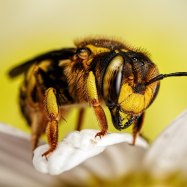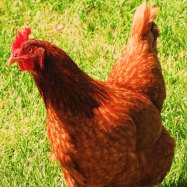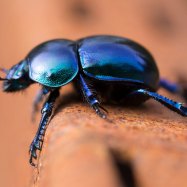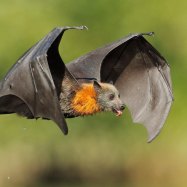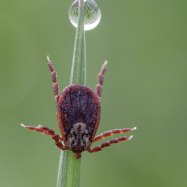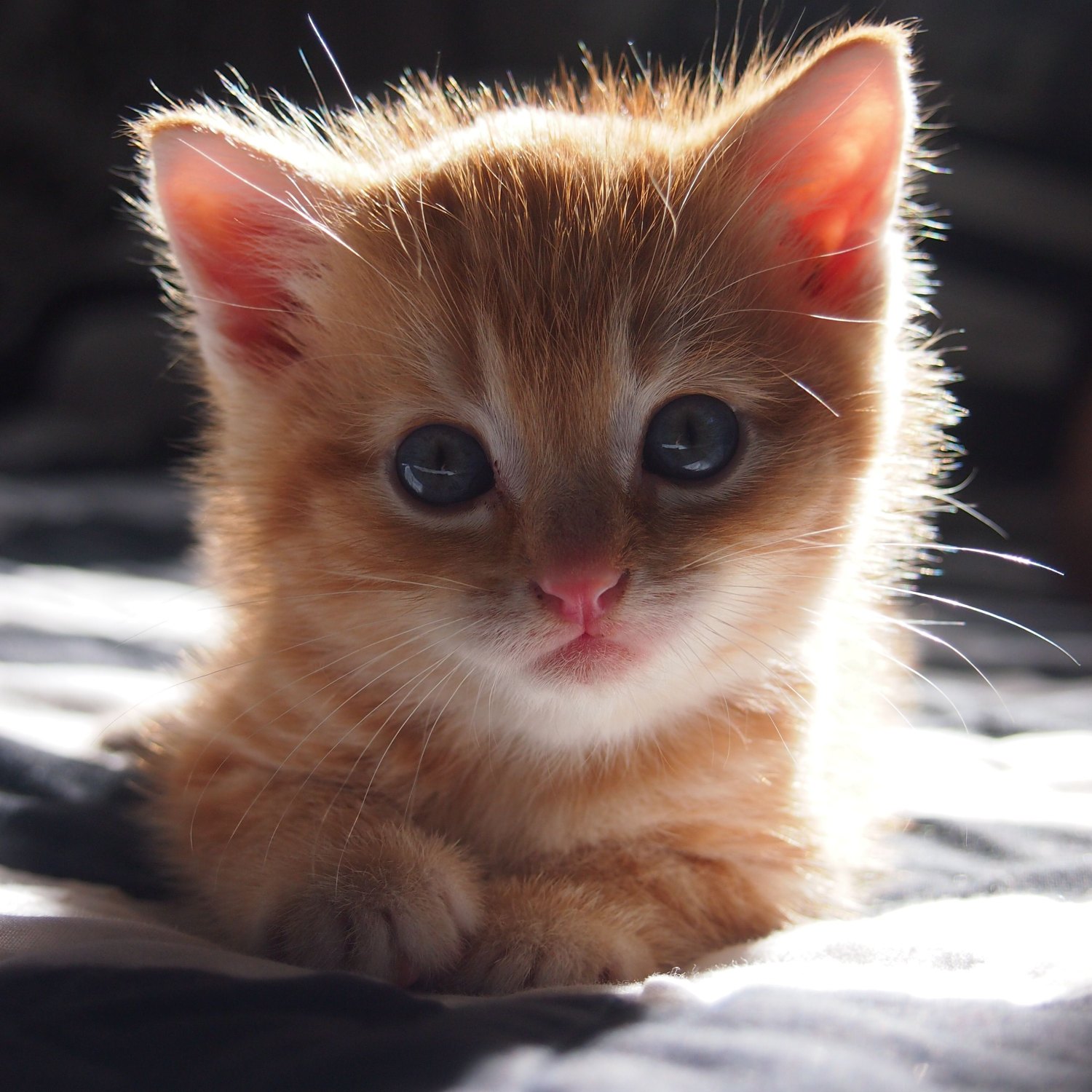
Cat
40-50 cm
Cats are beloved companions found in residential areas and households. This compact and muscular feline from the Felidae family measures 40-50 cm in length. Some cats are feral, living independently without human care. Despite being domesticated, they still retain their natural instincts. #Cat #Animals #FelineFacts
Animal Details Summary:
Common Name: Cat
Kingdom: Animalia
Habitat: Various habitats including forests, grasslands, and urban areas
The Fascinating Feline: All You Need to Know About Cats
Cats are one of the most beloved animals in the world. From their playful personalities to their independent nature, they have captured the hearts and homes of humans for centuries. Felis catus, known commonly as the domestic cat, is a species that belongs to the kingdom Animalia, phylum Chordata, and class Mammalia. They are a part of the order Carnivora and the family Felidae Cat. These small, carnivorous animals have a wide geographical distribution, found in various habitats around the world, with their country of origin being Egypt.Ever wondered what makes cats such unique and popular pets? Let's dive into the world of felines and discover the amazing features that make them stand out from the animal kingdom.
The Purr-fect Habitat:
One of the fascinating aspects of cats is their adaptability to various habitats. These flexible creatures can be found in forests, grasslands, and even urban areas. They can thrive in both rural and urban environments, making them suitable pets for people living in different settings.In the wild, cats are known to inhabit forests and grasslands where prey is readily available. However, due to their close relationship with humans, they are also found in residential areas and households. In fact, many domestic cats consider their homes and the surrounding neighborhood as their territory.
Those living in urban areas may also come across feral cats that roam freely in search of food and shelter Click Beetle. Despite their independent nature, they also form colonies to help each other survive in the harsh urban environment.
Carnivorous Creatures:
One notable feature of cats is their strict carnivorous diet. As obligate carnivores, they require a diet rich in protein and fat to thrive. This is due to their evolutionary history of being predators and hunters.In the wild, cats feed on small mammals, birds, and reptiles. Domestic cats, on the other hand, are fed commercial cat food that is carefully formulated to meet their nutritional needs. This includes the essential amino acid taurine, which is necessary for their heart and eye health. Owners should be cautious not to feed their cats human food as it may lack the necessary nutrients and may even be harmful to their health.
A Worldwide Connection:
Cats are a global animal, found in almost every country in the world. These curious creatures have traveled along with humans, spreading their presence around the globe through trade and exploration. Egypt is known as the country of origin for domestic cats, where they were worshipped and revered in ancient times. They were highly valued for their hunting skills in controlling pests, and their goddess Bastet was often depicted as a woman with a cat's head.Today, cats continue to capture the hearts of people worldwide, with Japan being the only country with more cats than dogs as pets. Their adorable and playful nature makes them ideal companions for people of all ages, with millions of households around the world owning one or more cats.
Their Colorful Coats:
Domestic cats come in a wide variety of colors and patterns, each one unique and beautiful. These variations in coats are a result of genetic mutations and selective breeding by humans.The most common colors seen in domestic cats include black, white, gray, orange, and brown. However, what makes their coats truly mesmerizing are the different patterns they can have. Some cats have solid coats, while others have stripes, spots, or a combination of both. Some popular patterns include tabby, tortoiseshell, calico, and bi-color.
Their coat not only adds to their aesthetic appeal but also serves as a form of protection against the elements. During colder months, cats have thicker coats for insulation, while in warmer months, they shed their fur for a lighter coat to stay cool.
Compact and Muscular:
Cats have a distinct body shape that makes them unique from other animals. They have a compact body with short legs, making them agile and fast on their feet. The muscles of a cat are also highly developed, allowing them to leap high and run with great speed. These physical attributes make them excellent hunters, able to pounce on their prey with precision and strength.Their retractable claws also contribute to their agility and hunting skills. These claws are used for gripping and catching prey, as well as for self-defense against predators. At rest, cats keep their claws hidden, but when needed, they can quickly extend them for use.
Their Measurements:
On average, domestic cats have a length of 40-50 centimeters and weigh between 3.6-4.5 kilograms. However, just like their coats, these measurements can vary depending on the breed and individual cat.Smaller breeds like the Singapura can weigh as little as two kilograms, while larger breeds like the Maine Coon can weigh up to 11 kilograms. Cats also come in different shapes and sizes, with some being slender and others more stocky. This adds to their individuality and charm, making them hard to resist.
In Conclusion, cats are truly remarkable creatures, with a diverse range of characteristics that make them stand out in the animal kingdom. From their adaptability to various environments and their strict carnivorous diet to their colorful coats and unique body shape, they have captured the hearts of people all over the world. Whether as our playful pets or the urban ferals, their presence adds to the richness of our lives, and they continue to captivate us with their curious and affectionate nature. So, the next time you see a cat, take a moment to appreciate their fascinating traits and be grateful for the joy they bring into our lives.

Cat
Animal Details Cat - Scientific Name: Felis catus
- Category: Animals C
- Scientific Name: Felis catus
- Common Name: Cat
- Kingdom: Animalia
- Phylum: Chordata
- Class: Mammalia
- Order: Carnivora
- Family: Felidae
- Habitat: Various habitats including forests, grasslands, and urban areas
- Feeding Method: Carnivorous
- Geographical Distribution: Worldwide
- Country of Origin: Egypt
- Location: Residential areas, households, and some are feral
- Animal Coloration: Various colors and patterns
- Body Shape: Compact and muscular
- Length: 40-50 cm
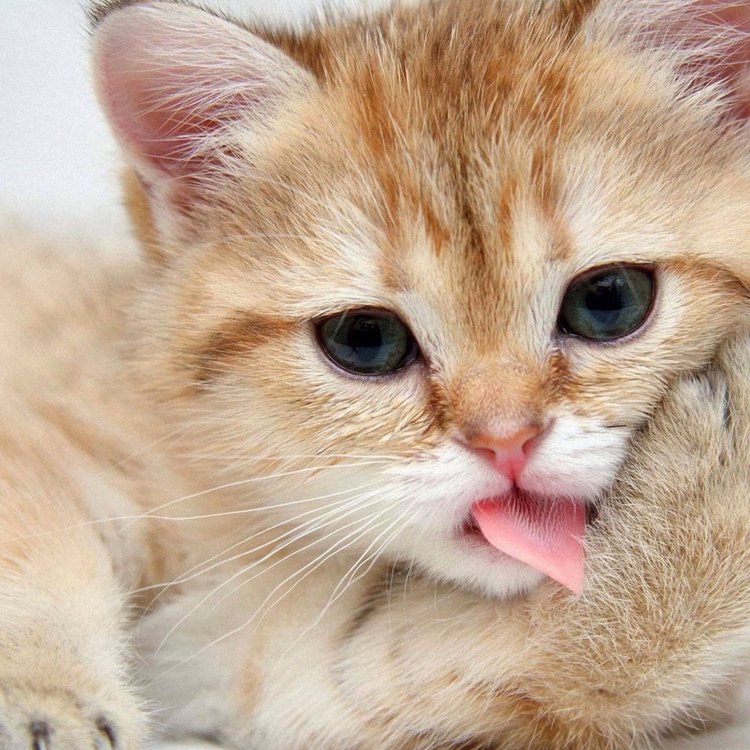
Cat
- Adult Size: Medium-sized
- Average Lifespan: 15 years or more
- Reproduction: Sexual
- Reproductive Behavior: Polygynous
- Sound or Call: Meow
- Migration Pattern: Non-migratory
- Social Groups: Can be solitary or live in groups
- Behavior: Curious, agile, and territorial
- Threats: Predators, diseases, accidents, and human activities
- Conservation Status: Domestic cats are not endangered, but some wild cat species are
- Impact on Ecosystem: Can have negative impacts on bird populations
- Human Use: Companionship, pest control
- Distinctive Features: Flexible and retractable claws, sharp teeth, and excellent night vision
- Interesting Facts: Cats have a specialized collarbone that allows them to always land on their feet when they fall
- Predator: Small mammals, birds, reptiles, and insects
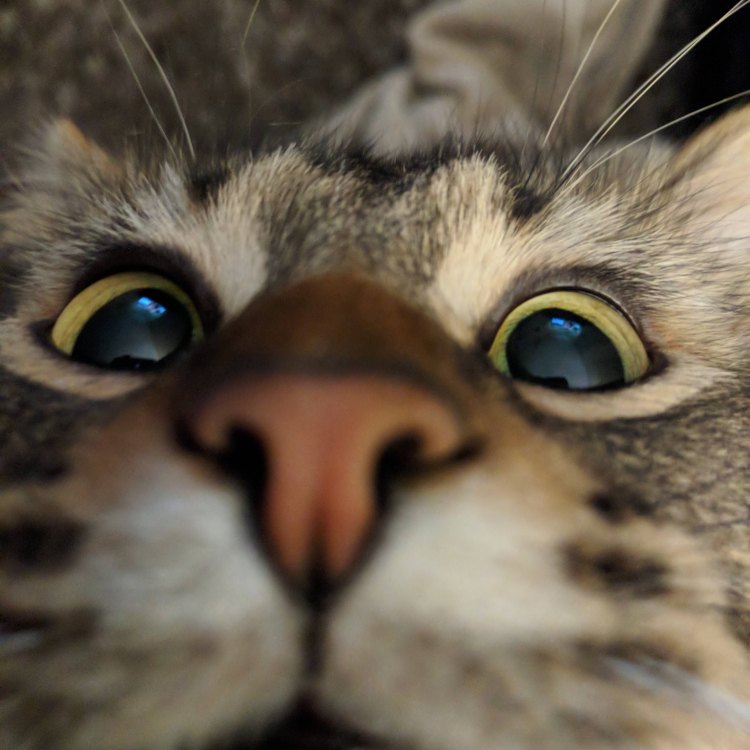
Felis catus
The Fascinating Feline: An Insight into the World of Cats
Behind their cute and cuddly appearance lies a creature with a mysterious and fascinating nature - the cat. These furry felines have been domesticated for thousands of years and are beloved pets in households all around the world. But have you ever wondered what makes cats so unique and adaptable? In this article, we will delve into the world of cats, exploring their physical and behavioral characteristics, how they interact with their environment, and their impact on both humans and the ecosystem.- Medium-Sized and Long-Lived
Cats come in a variety of sizes and breeds, but on average, they are considered medium-sized animals PeaceOfAnimals.Com. Depending on the breed, an adult cat can weigh anywhere between 5 to 15 pounds and can stand at a height of 8 to 10 inches. They are compact creatures with a sleek and agile body, designed for hunting and climbing. Their size makes them the perfect companion for both small and large living spaces, and they have the ability to adapt to various environments.
When it comes to their lifespan, cats are known for their longevity. On average, a domestic cat can live up to 15 years or more with proper care and nutrition. Some breeds, such as the Siamese or Sphynx, can live up to 20 years or more. This makes them lifelong companions and requires a long-term commitment from their owners.
- Polygynous Reproducers
Like most mammals, cats reproduce sexually, but they have a unique reproductive behavior known as polygyny. This means that one male cat can mate with multiple female cats, increasing their chances of passing on their genes and producing healthy offspring Common Yellowthroat. This behavior is more commonly seen in wild cats, whereas domestic cats tend to have a monogamous relationship with their owners.
Female cats are able to reproduce from the age of six months and can have multiple litters in a year. The gestation period is approximately two months, and they can give birth to an average of four kittens per litter. This reproductive behavior has contributed to the overpopulation of cats, leading to the need for spaying and neutering programs to control their numbers.
- Familiar Meows
One of the most distinctive sounds of cats is their famous "meow." But did you know that this sound is not used for communication between cats? It is actually a learned behavior specifically for human interactions. Kittens learn to meow as a way to communicate with their mother, but once they are weaned, they no longer use this sound with other cats. Instead, they use other vocalizations such as purring, hissing, and growling to communicate with each other.
Each cat's meow is unique and can vary in pitch, tone, and duration. Some cats have a high-pitched meow, while others have a deeper and more guttural sound. This meow is used to get attention, express hunger, or even complain about something. It is a way for cats to interact with their owners and show affection, making them excellent companions.
- Non-Migratory Creatures
Unlike some bird and mammal species, domestic cats do not have a migratory pattern. They are territorial animals and tend to establish their home range within their familiar surroundings. This is why indoor cats typically do not stray too far from their home, unlike their outdoor counterparts who may wander off in search of prey or to mark their territory.
Cats are known to have a strong attachment to their environment and can become stressed if moved to a new location. This is because they have a strong sense of smell and are familiar with every nook and cranny of their territory. This attachment also helps them navigate and find their way back home if they happen to get lost.
- Solitary or Social
When it comes to their social behavior, cats can be either solitary or live in groups, depending on their environment. Wild cats, such as lions and tigers, are known to live in prides or groups for hunting and protection. On the other hand, domestic cats are known to be solitary creatures, preferring their own company and establishing a territory to call their own.
However, this does not mean that cats do not form social bonds. In households with multiple cats, they can form strong bonds with their feline companions and even groom each other as a sign of affection. They also have a hierarchy within their social groups, with one cat typically being the dominant one.
- Curious, Agile, and Territorial
Cats are known for their innate curiosity and agility. They have a natural instinct to explore and investigate their surroundings, making them excellent hunters. Their curiosity is exhibited through their playful behavior, chasing after moving objects and even attempting to climb or jump onto high surfaces.
Their agility comes from their flexible and retractable claws, allowing them to climb trees, fences, and other structures with ease. Cats also have excellent balance and coordination, making them able to land on their feet, even from great heights. This is possible due to their specialized collarbone and flexible spine, which helps them rotate their body mid-air when falling.
Furthermore, cats are known to be highly territorial animals. They have scent glands on their paws, face, and anus, which they use to mark their territory by rubbing against objects. This helps them establish and maintain their home range and communicate with other cats in the area.
- Threats and Conservation Status
Like any animal, cats have their share of threats in the wild. These include predation by larger animals such as coyotes, bobcats, and birds of prey. They are also prone to diseases and illnesses, which can significantly reduce their lifespan. In addition, cats are also at risk of accidents, such as being hit by vehicles or getting into fights with other animals.
While domestic cats are not considered endangered, there are some wild cat species that are facing threats to their survival. These threats include loss of habitat, poaching, and human-wildlife conflict. Some of these endangered cat species include the Siberian tiger, snow leopard, and African lion.
- Impact on Ecosystem
Cats, especially feral and outdoor cats, can have a negative impact on their surrounding ecosystem. They are skilled hunters and can prey on small mammals, birds, reptiles, and insects, disrupting the natural balance of the ecosystem. This is why it is important for cat owners to keep their pets indoors to prevent them from contributing to the decline of certain species.
On the other hand, some may argue that cats have a positive impact on the ecosystem as they can control pest populations. This is especially true for feral cats, who play a role in controlling rodent and insect populations. However, this can also have unintended consequences, such as harming beneficial species like bees and butterflies.
- Human Use and Interactions
Cats have been domesticated for thousands of years and have become an integral part of human society. They provide companionship, comfort, and entertainment to their owners. In addition, some cultures also value cats for their religious significance, such as in Ancient Egypt, where they were worshipped as gods.
Cats also have a practical use as pest control. Their hunting skills have been utilized in barns and homes to help keep rodent populations in check. In some countries, such as in India, feral cats are even used to control snake populations in rural areas.
- Distinctive Features and Interesting Facts
Apart from their curious and independent behavior, cats also have some physical characteristics that make them stand out. They have flexible and retractable claws that allow them to grip and climb, as well as sharp teeth for hunting and grooming. Their eyes have a reflective layer, called the tapetum lucidum, which gives them excellent night vision.
One of the most interesting features of cats is their specialized collarbone. Unlike other mammals, a cat's collarbone is not fixed to their other bones, allowing them to rotate their front legs in any direction. This enables them to always land on their feet when falling from a high surface - a unique and impressive skill.
- Small Mammal Predators
Despite their small size, cats are skilled hunters and are known to prey on small mammals, including rodents, rabbits, and even small deer in certain areas. This hunting behavior comes naturally to cats, as they are descended from wild cats who relied on hunting for survival.
However, as pets, cats do not have the same need to hunt for food, and their owners provide them with a balanced and nutritious diet. This has led to a decrease in their hunting behavior, and some cat breeds have even lost their natural hunting instincts.
The world of cats is full of mystery and uniqueness, from their reproductive behavior to their flexible bodies. Their adaptability and companionship have allowed them to become beloved pets and vital parts of human society. While their impact on the ecosystem should not be ignored, proper care and responsible ownership can help mitigate any negative effects. So next time you see a cat, take a moment to appreciate their fascinating nature and the special place they hold in our lives.
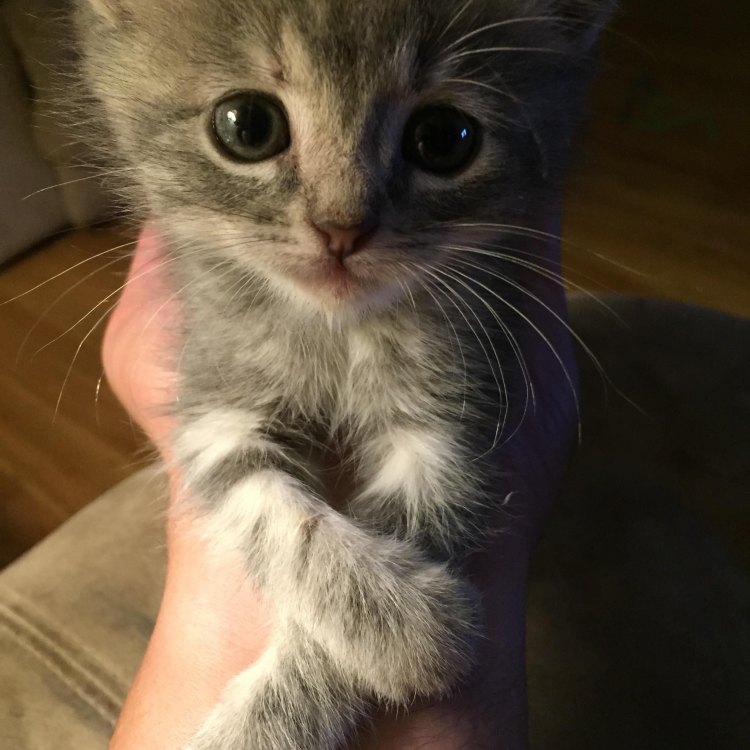
The Fascinating Feline: All You Need to Know About Cats
Disclaimer: The content provided is for informational purposes only. We cannot guarantee the accuracy of the information on this page 100%. All information provided here may change without prior notice.

